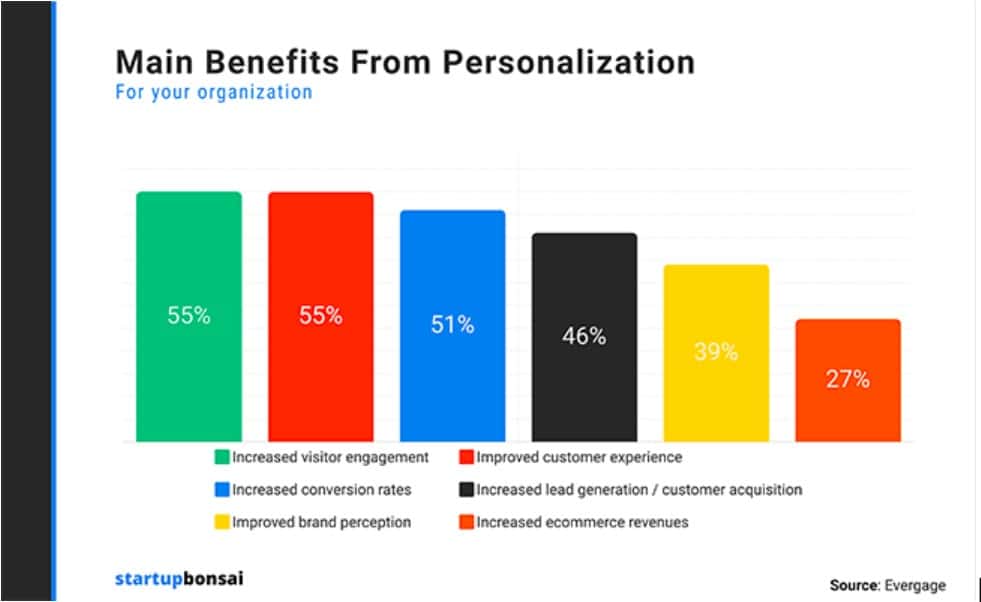Consider this ordinary situation. You’re planning a weekend away camping, and could do with some new outdoor gear. Almost without thinking, you switch on your laptop and go straight to your trusty outdoor apparel website.
You’ve bought from there many times before. Not only have they consistently delivered in terms of product quality, but the whole experience has always been just… genuinely good.
Every part of the experience has gone as smoothly, easily, and pleasantly as ever. You were greeted on the home page by the reassuring bear-shaped logo. You’ve read the blog posts about the best spots to visit. And, once you’ve placed your order, you have received a friendly confirmation order.
Now, you’re looking forward to your camping weekend even more. You’ll tell your friends to check out the website and encourage them to buy gear, too.
Well, that’s what a great brand experience can do to shoppers—would you like your brand to achieve that? Then, our guide right here is what you need.
Understanding brand experience and its importance
As you have probably realized by looking at our example above, when we talk about “brand experience” we refer to all the thoughts, emotions, and feelings that a brand inspires in its customers.
In our example, we described the fictional outdoor apparel brand as “reassuring,” “super-informative,” and “friendly.” Those are, in this case, the pillars of this specific brand experience.
Customers approaching a familiar brand do so not only because they know what to expect—great products and services—but because it makes them feel a certain way.
Don’t be fooled into thinking, though, that only consumer products companies should focus on crafting a fantastic brand experience. Whether you sell wooden furniture or eFax service solutions, you’ll definitely benefit from improving your brand experience.
The advantages of a solid, positive brand experience include:
- Enhancing customer loyalty: Consistently delivering an excellent brand experience across all the touch points of a customer’s journey helps to demonstrate that you truly care about your customers, thus boosting their satisfaction, retention, and loyalty.
- Reinforcing brand equity: A higher-quality brand experience supercharges the perceived value of your brand because it taps into customers’ emotions, values, and beliefs.
- Sharpening your competitive edge: If you provide a better brand experience than your rivals, it goes without saying that your target audience will want to shop with you. Simple as that.

The three core elements of brand experience
Let’s now discuss three main aspects of a brand experience.
1. Coherence and consistency
However your brand communicates with its customers, it’s vital that it does so in a coherent and consistent way. Make sure you use the same visuals, typography, and voice across all your channels, thus ensuring a cohesive brand experience throughout.
2. Authentic connections
As we briefly touched on earlier, one of the main features of a great brand experience is its ability to build a genuine bond with audiences. By inspiring positive emotions in your customers, you can craft authentic relationships that last over time and promote brand loyalty and advocacy.
3. Personalization and engagement
Possibly, the most important pillar of a successful brand experience is its ability to craft hyper-relevant and personalized content. The type of personalization you’ll offer will, of course, depend on both your audience and the type of products and services you sell.
A customized company-customer interaction between our fictional outdoor apparel brand will differ widely from a similar interaction between a firm offering remote manager software solutions. The latter will need to create interactions aimed at its customer base of tech-savvy people.
Either way, personalization leads to loyalty, and loyalty can lead to your customers becoming brand advocates and ambassadors, further promoting your brand’s visibility and boosting its reputation.

Image Sourced From Startup Bonsai
Brand experience strategy: Build yours in five steps
Ready to get down to business and start building and refining your brand experience strategy? Follow these five steps, and you’ll get there in no time.
1. Set your goals
First of all, you’ll need to have your goals crystal clear. What do you want to achieve by improving your brand strategy? Is there anything specific that you know is not working right now for your target audience? Or do you still need to find your target audience?
Try to be as accurate as possible when determining your goals. If you can, try to measure what you want to accomplish, as this will help keep you motivated and on track.
2. Leverage social listening
Another essential step to take on your brand experience path is to perform regular social listening. This, essentially, involves keeping your finger on the pulse. What is said about your brand online, specifically on social media platforms?
The reason behind this is simple: to deliver the best possible brand experience to your customers, you’ll need to know what they want, need, like, and dislike. Social listening can be accomplished through a number of means. This ranges from monitoring branded keywords to keeping an eye on the latest customer reviews.
Let’s use, once again, our introductory example of that fictional outdoor apparel brand.
Let’s assume that, through consistent social listening, the brand’s social media marketing team has identified a huge trend: many of its customers/followers are loving the new homepage. This is particularly because of that exciting aerial video that inspires them to get out and enjoy the great outdoors (and buy more outdoor equipment as a result).
So, the team jumps on a call to review some potential video clips they could use for a future social campaign, and thanks to digital tools that allow it to annotate a video, it manages to put together a new strategy.
This involves tapping into this positive sentiment and putting together a series of scenic and inspirational Instagram posts Not only do these posts align perfectly with the brand itself, but they are also liked and shared repeatedly by the brand’s followers, boosting visibility and potentially attracting new customers.
This is literally the power of social listening in action – from keeping an ear out for mentions of your brand to providing exactly what your customers want (and love).

3. Keep monitoring your brand experience
Monitoring your brand at all times should be another vital element of your brand experience to-do list. Yes, your brand experience might be fabulous this month, but what if you launched a new product next month, and it was a bit of a flop? How would your customers react?
To ensure that you stay on top of everything, keep tracking things like sentiment, engagement, retention, and brand reputation. If you identify any potential issues, you’ll be able to act quickly and fix the problem before your entire brand experience collapses.
4. Tweak and refine your brand experience strategy
Even the best brand experience can be improved. Consider this. If, today, you are catering to the 20-35 age demographic, and if you’re still in business in ten years, those people will have grown out of your products, and new people will have entered your sphere.
This means that you’ll be going from serving mostly Gen Z and Millennials to suddenly having to satisfy the requests of Gen Alpha. Can you imagine how chaotic it will be if you never revise your brand experience?
Remember, the process of adapting your brand experience strategy should be all-encompassing. It should cover everything from SaaS content marketing to customer service.
And the thing is, you don’t even need to look that far ahead. The need to deliver a great brand experience (and protect your brand’s reputation at the same time) is something you’ll want to work on every single day – for the customers of today and tomorrow.

5. Get your whole company on board
When it comes to things like your brand experience strategy, your immediate instinct might be to only involve people from your marketing and sales team. Wrong. As we mentioned earlier, a brand experience spans every part of your business, so you should keep everyone involved.
Just think, one last time, of our initial example.
You love that outdoor apparel brand because of all the feelings it evokes in you. You feel reassured when you see their bear-shaped logo; you get excited and inspired when you read their blog posts; you feel confident when paying; and you appreciate the sustainable efforts the brand makes when shipping and delivering your items in the most eco-friendly way.
Each of these feelings was inspired by the same brand but through separate departments – namely, marketing and communications; sales; IT; and logistics. Every person in every department strives to do their best to achieve the same goal: deliver a cohesive, consistent, and infallibly wonderful brand experience.
That’s precisely why solid teamwork makes the (brand experience) dream work.
Ready to supercharge your brand experience strategy?

Crafting and delivering a brand experience may sound like a daunting task, But it’s essential if you want to stand out as your own unique and authentic brand in an ocean of fierce competitors.
In our guide, we reviewed what a brand experience consists of, what its benefits are, and how you can go about boosting yours. Are you ready to begin?








